A striking resemblance to the 48/215 don't you think?
Sunday, July 18, 2021
Aussie built sports cars.
As you know I'm a sucker for Australian sporties. One of my favourites is the Magnolia- Climax.
Built and raced in the 1960s by Gavin Sandford-Morgan, what a pretty little thing. Where did Gavin get the name from? It was the brand tag on the back of his wife's bra.Saturday, July 17, 2021
Thursday, July 15, 2021
Tuesday, July 13, 2021
Becoming rare.
The coveted Cortina GT dash padding with the 4 holes for gauges. You don't see them very often these days. Although Beven has a mould for one.
Out and about in Melbourne on the weekend.
Alan discovered some rare sunshine so headed off to the countryside for a coffee.
Gotta watch those wombats.
Just finished reading a Nagari road test by Jon Branch, well known Bolwell expert.
"The fiberglass bodywork on Bolwell cars was very good, better than many, so you are mainly looking for damage from accidents or collisions with wildlife such as kangaroos or wombats. A collision with a kangaroo will tend to result in its going over the hood/bonnet and if the windscreen is not laminated it can finish up in the car on the driver’s lap. The end result of such a scenario is damage to both car and driver, the kangaroo often survives and hops off once out of the vehicle. Wombats will cause low front damage and they normally finish up going under the car, as do road-kill kangaroo carcases. So look for damage consistent with collision with animals as well as traffic accident damage.
The quality of the paint will depend on how recently the car has been painted. The old gel-coat finish was not as good as modern finishes and getting a good re-finishing on a tatty looking car will do some wonders. For replacement body panels contact your Bolwell club. The Victorian club has original molds for the fiberglass panels of some Bolwell car models."
Monday, July 12, 2021
Sunday, July 11, 2021
The Ford 9 inch.
Secrets of the Ford 9-Inch Rear Axle
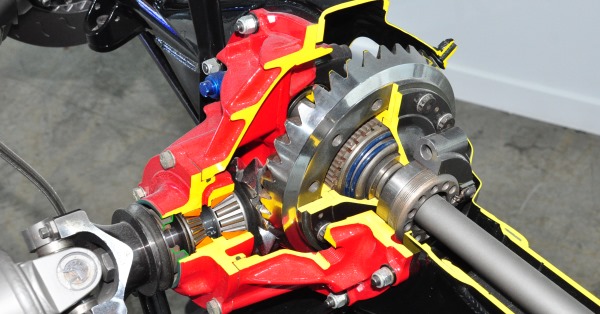 Even though it was developed more than 60 years ago, the Ford 9-Inch is the rear axle of choice throughout the American high-performance world. Here’s why.
Even though it was developed more than 60 years ago, the Ford 9-Inch is the rear axle of choice throughout the American high-performance world. Here’s why.
When the Ford Motor Co. unveiled its 1957 vehicle line in October of 1956, in the press materials there was only brief mention of a new rear axle assembly for its cars and light trucks. Engineered in-house and produced by the company’s Sterling Axle Plant on Mound Road, which had opened only a few months earlier, the axle proved to be a winner—beyond anyone’s wildest dreams, actually. At the time, no one could have foreseen that today, more than 60 years later, the Ford 9-Inch is ubiquitous all across the American racing and performance scene.
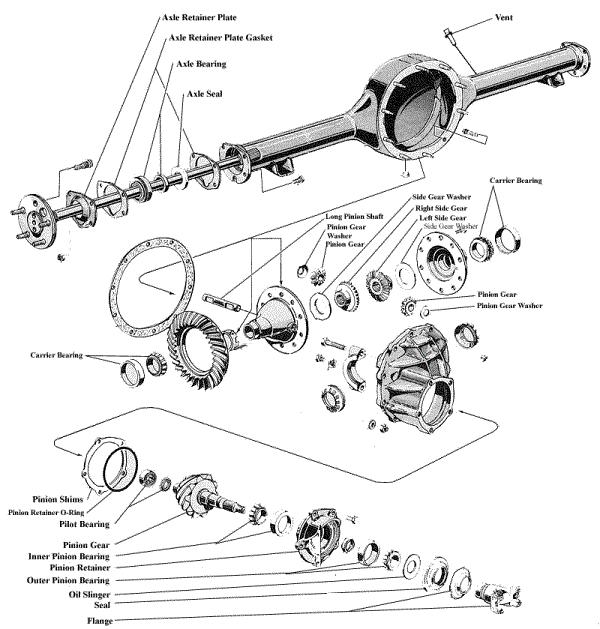
The exploded diagram above reveals many of the design features that made the 9-Inch so popular:
+ The carrier housing is a front-loading dropout type, also known as a “banjo” or “pig” style, which is far more mechanic-friendly than the more common Salisbury/Spicer design in which the differential carrier loads into an integral axle housing from the rear. Here, backlash and pinion-depth adjustments are quick and easy, and gear ratio changes can be accomplished in minutes.
+ The pinion-shaft assembly is carried in a separate, detachable sub-housing (a cartridge, as some describe it), which simplifies adjustments even further and allows beefy, large-diameter bearings and yoke.
+ The axle shafts are secured in the housing with sturdy retainer plates at the housing ends, rather than with C-clips inside the carrier, a setup that is not terribly safe or suitable for serious racing use.
+ The ring gear (crown wheel in the Queen’s English) is a generous 9.0 inches in diameter, which allows the axle to withstand extreme torque loads and lent the rear axle its familiar name. Ford also manufactured axles of this design with 8.0-inch and 9.38-inch ring gears for various applications, and at one time or another, the axle family has been used in virtually every U.S. car and light truck platform produced by the company between 1957 and 1986.
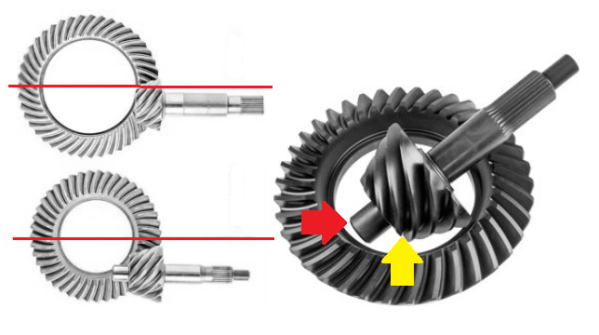
So by fortune or design, the 9-Inch checks a number of important boxes for high-performance use. And when we dig a little deeper, we can see even more significant advantages, starting with a property called hypoid offset, above. In the hypoid gearset, introduced by Packard and Gleason Gear Works in 1926, the pinion gear is offset from the ring gear’s centerline, rather than centered as on a conventional spiral-bevel gearset. The result is a sort of bevel/worm gear hybrid, combining both meshing and sliding action between the gear teeth, and the increased contact area produces a stronger, quieter gearset. (Hypoid axles also allow a lower driveshaft and flatter passenger floor, surely the main reason they were embraced by the American car industry.)
In most U.S. passenger car drive axles, hypoid offset is generally in the 1.25-in. range (top left gearset). But on the Ford 9-inch (lower left gearset) the offset is much greater: 2.38 inches. This provides an even longer, deeper tooth contact (yellow arrow). The increased contact area does come at some cost: greater friction, more heat (often requiring a differential cooler), and a small but significant increase in mechanical loss— around two percent. In most applications, racers find the sacrifice is more than worth it. But it’s surely no coincidence that the 9-Inch was discontinued on production cars when fuel efficiency became a prime concern.
One more advantage of the 9-inch worth mentioning, as indicated by the red arrow above: Unlike most every other unit of its class, the Ford carrier includes an extra journal on the nose of the pinion to support a bearing set deep in the case, which stabilizes the gearset against deflection and allows a shorter, more compact pinion shaft.
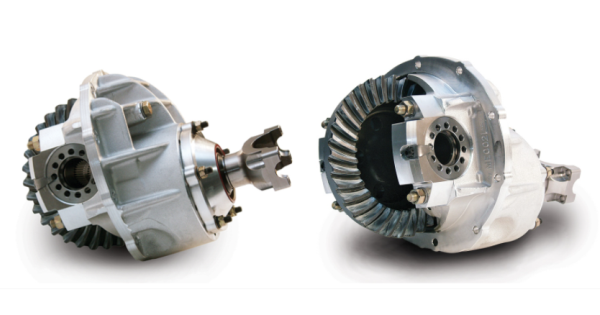
With all these valuable attributes, the Ford 9-inch is far and away the favorite of the American high-performance scene, from street rodding to NASCAR, and it has been for decades—despite the fact that Ford hasn’t offered the unit in a production vehicle since 1986. Every component, down to the last spacer and seal, is now available in the performance aftermarket. Like a small-block Chevy V8 or a Fender guitar, an entire 9-inch axle can be assembled without a single original factory part. Specialist suppliers including Strange, Mark Williams, and Moser Engineering (shown above) offer a complete range of components and assemblies for every conceivable purpose.
It may seem a little odd that one of the top racing series in the world depends on a major component that was developed more than 60 years ago, but it’s true: Every car that runs in NASCAR Cup today has a Ford 9-Inch rear end under it—yes, even the non-Ford entries. As a result, the NASCAR teams have amassed vast inventories of 9-Inch assemblies, as shown below, in every gear ratio you can imagine, for tracks from Martinsville to Talladega.
But the way we hear it, that may be changing soon. Reportedly, NASCAR will ditch the venerable 9-Inch on the next-generation Cup car due in 2022 and adopt a sequential transaxle similar to those used in the Australia Supercars Championship. Still, we know that the Ford 9-Inch will be around the performance world for decades to come.
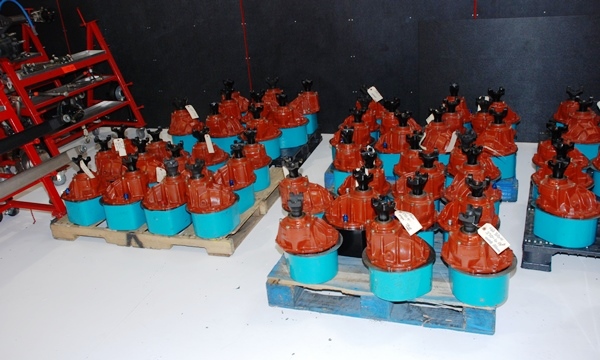
SHARE THIS:
Wednesday, July 7, 2021
A nice little potted history of Elfin.
Born in 1935, Garrie Cooper was a successful race car driver as well as a successful designer and engineer. His resume is impressive . . . and as a driver he won the 1968 Singapore Grand Prix, the Australian 1½ Litre Championship and the 1975 Australian Sports Car Championship. Incredibly, he achieved this success in Elfin cars of his own design.
Garrie Cooper, with the help of his father, Cliff Cooper, founded Elfin Sports Cars in October 1959. The company was based in Edwardstown, South Australia. The first car Elfin Sports Cars designed was the front engined Streamliner. The prototype was completed in October 1959 and in total 22 production versions of it were built between 1959 and 1963.
Elfin Sports Cars built a number of different race cars for many different classes. Some of the more significant Elfins are as follows. From 1961 – 1965 they produced Formula Junior and Catalina racing cars, the Clubman sports car and the Mallala sports racing car. From 1964 – 1969 they produced the Type 100 Mono Australian 1½ Litre Formula racing car, the Type 500 Formula Vee racing car, the Type 400 Group A racing car (V8 powered) and the Type 300 sports racing car. From 1968 – 1972 they produced the Type 600 open wheel racing car suitable for various formulas, the 620FF/620B Formula Ford racing car, the Type 350 & Type 360 sports racing car and the MR5 Australian Formula 1 (F5000) racing car.
Unfortunately, Garrie Cooper passed away at the young age of 46 on the 25th April 1982. His father completed the outstanding orders before offering the company for sale. In 1983 the company was acquired by Don Elliot, racing driver Tony Edmondson and mechanic John Porter. They sold the company in 1993 to Murray Richards. When he acquired the business he set out to build a new generation of Elfin Clubmans, the Type 3. Unfortunately, failing health forced him to sell the business in 1998. Elfin was then acquired by Bill Hemming and Nick Kovatch. They decided to relocate the business to Melbourne and over the next couple of years Elfin started collaborating with GM Holden which resulted in the concept MS8 Streamliner being revealed at the 2004 Melbourne International Motorshow. It wasn’t until 2006, after the business was sold to Tom Walkinshaw (HSV and Walkinshaw Performance), that limited production of two models of the MS8 were started. Walkinshaw passed away in December 2010 and the last Elfin was built in March 2012.
In the Garrie Cooper era, Elfin built 248 racing and sports racing cars in 27 different models over a 25-year period.
Elfin has won no less than 29 championships and major titles including two Australian Driver’s Championships (in 1973 with John McCormack driving an Elfin MR5 Repco-Holden and in 1975 with John McCormack driving a Elfin MR6 Repco-Holden), four Australian Sports Car Championships (in 1970 with Peter Woodward driving an Elfin 350 Coventry Climax, in 1973 with Phil Moore driving an Elfin 360 Repco, in 1974 with Henry Michell driving an Elfin 360 Repco and in 1975 with Garrie Cooper driving the Elfin MS7 Repco Holden), three Australian Tourist Trophies (in 1966 with Frank Matich driving an Elfin 400 Traco Oldsmobile, in 1976 with Stuart Kostera driving an Elfin MS7 Repco Holden and in 1978 with Greg Doidge driving an Elfin 360 Repco) and three Formula Ford titles (in 1970 with Richard Knight driving an Elfin 600 FF, in 1971 with Larry Perkins driving an Elfin 600 FF and in 1974 Terry Perkins driving an Elfin 620FF. Elfin also took out the 1968 Singapore Grand Prix with Garrie Cooper driving an Elfin 600, twice won the Malaysian Grand Prix (in 1968 with Hengkie Iriawan driving an Elfin 600 and in 1969 with Tony Maw driving the same car) and also won the Australian Formula Two Championship in 1972 with Larry Perkins in an Elfin 600B.
World Formula One Champion James Hunt raced an Elfin, as did the brilliant French Formula One driver, Didier Pironi.
One of Australia’s greatest motor racing success stories was the Elfin 600 of which 27 cars were built from 1968 -1971. Following the success Garrie Cooper had in South East Asia in 1968 he decided to return in 1969 with a more powerful and improved Type 600. This time the type 600 chassis was combined with the 2½ litre Repco-Brabham Type 830 V8 engine (Type RB830). The 600C became the first all Australian racing car designed to comply with Australian National Formula One regulations. Only 3 Elfin 600’s were originally built with the Repco-Brabham engine.
Oh for the simplicity of a Nagari sports roof.
This is a shot of my MR2 roof. It fits fairly nicely. It came from California at great expense. It's been on for a while now and there are no leaks. But what a task it was to fit. It took at least 5 days to dismantle the old one, carefully putting all the springs, cables, clips and screws in containers for use later on the new roof. You'd be buggered if you lost anything. Then follows the fitting of all those bits to the new roof (another 5 days or so) before putting the actual roof on. It all worked out OK in the end, but what a rigmarole. Anyway, it goes up and down fairly well so that's something. However, the Nagari soft top despite being designed 50 years ago is just so simple and neatly folds up to be stored in the boot and looks pretty smart when it's up as well.
Tuesday, July 6, 2021
Goulburn's first Nagari.
No, it's not Colin McAlister's. Not by a long shot.
These pictures, along with a few others, were posted on Facebook by someone who remembers the local dry cleaner's amazing taste in cars back in the late 60s and early 70s which included apart from the Bolwell, a Warwick Yellow GTS Monaro and an E38 Charger.
Friday, July 2, 2021
Slum Dog Millionaire.



















